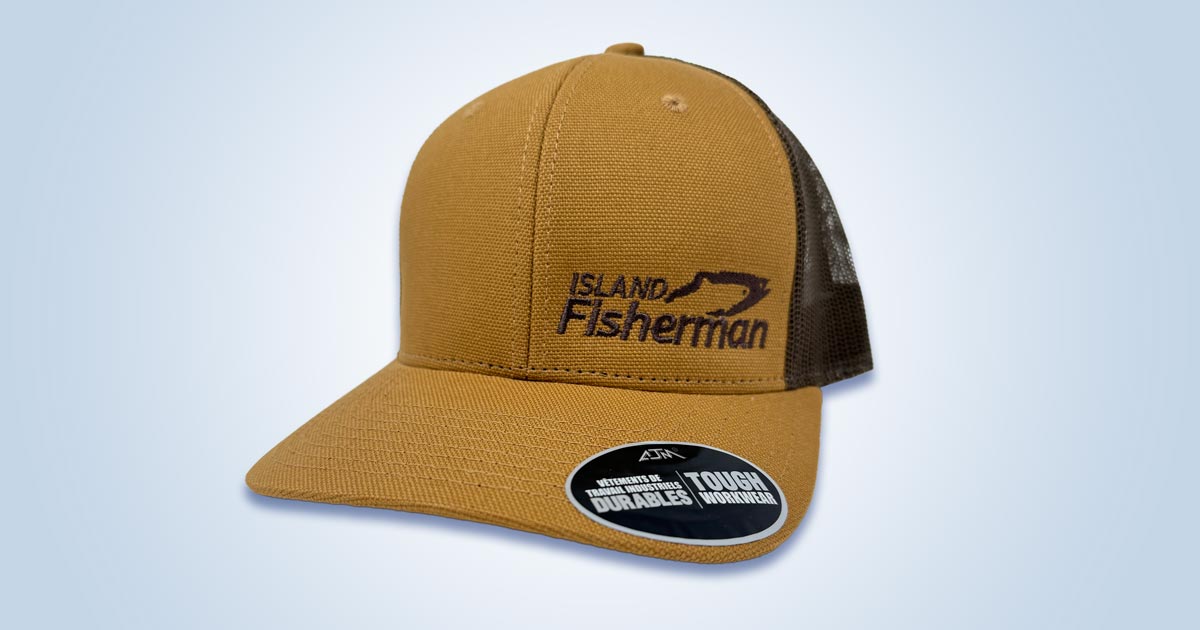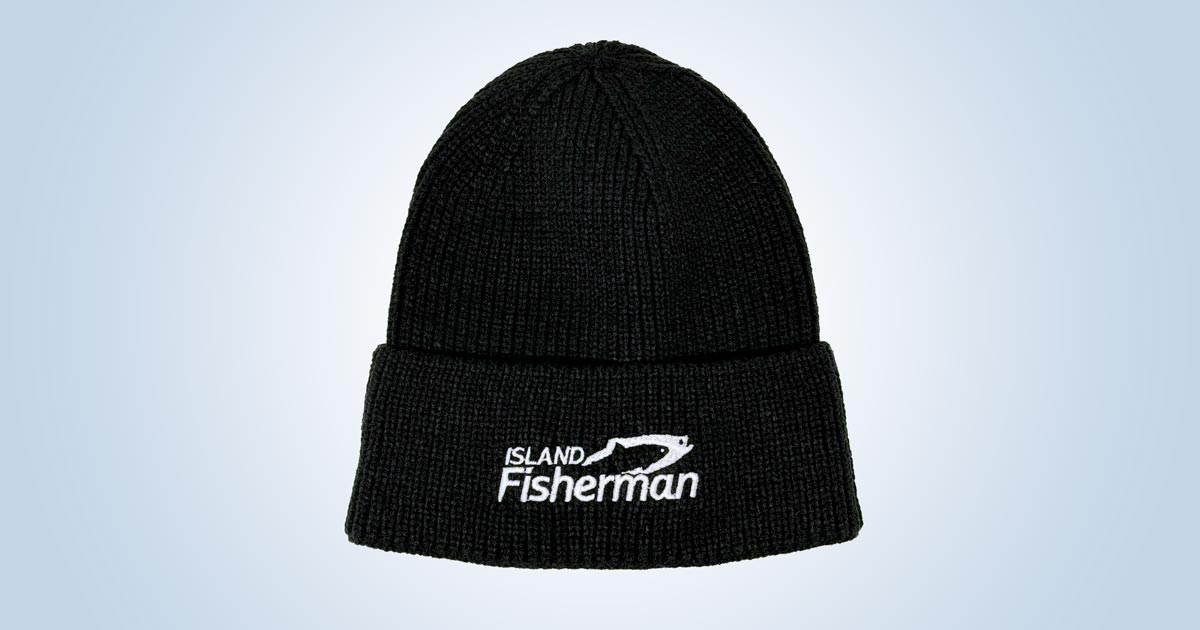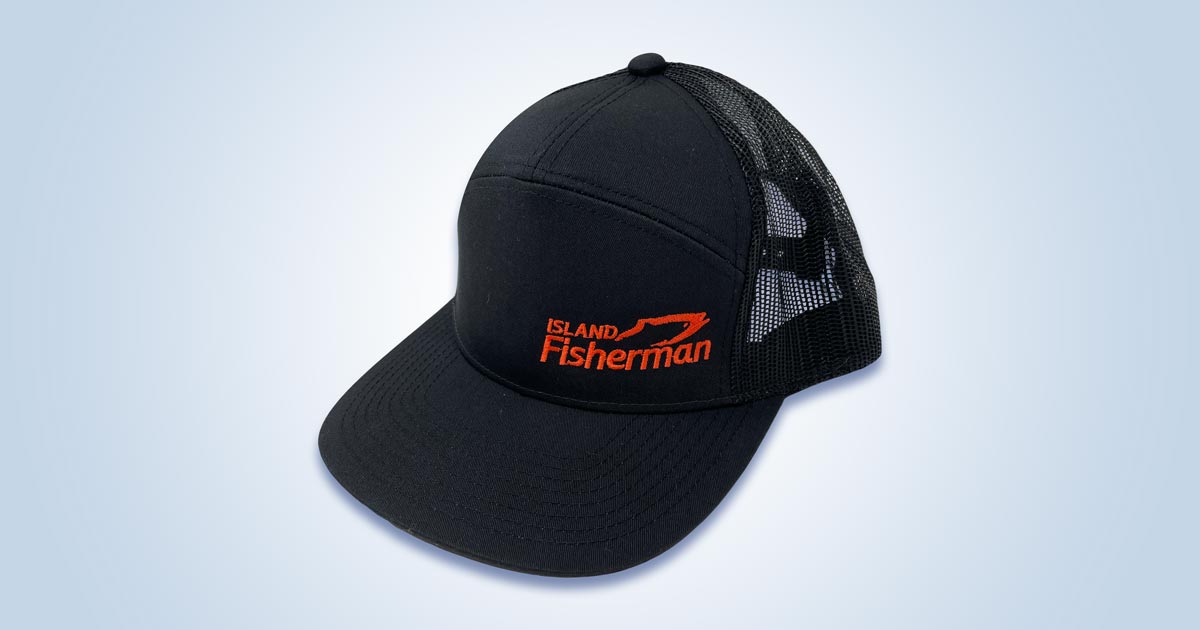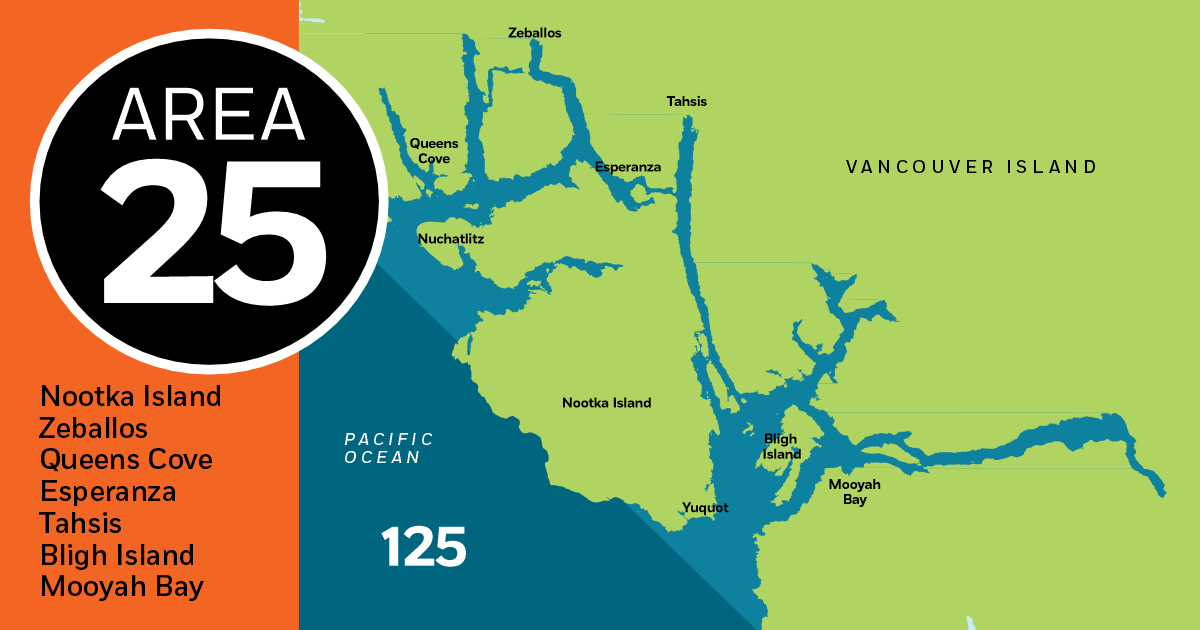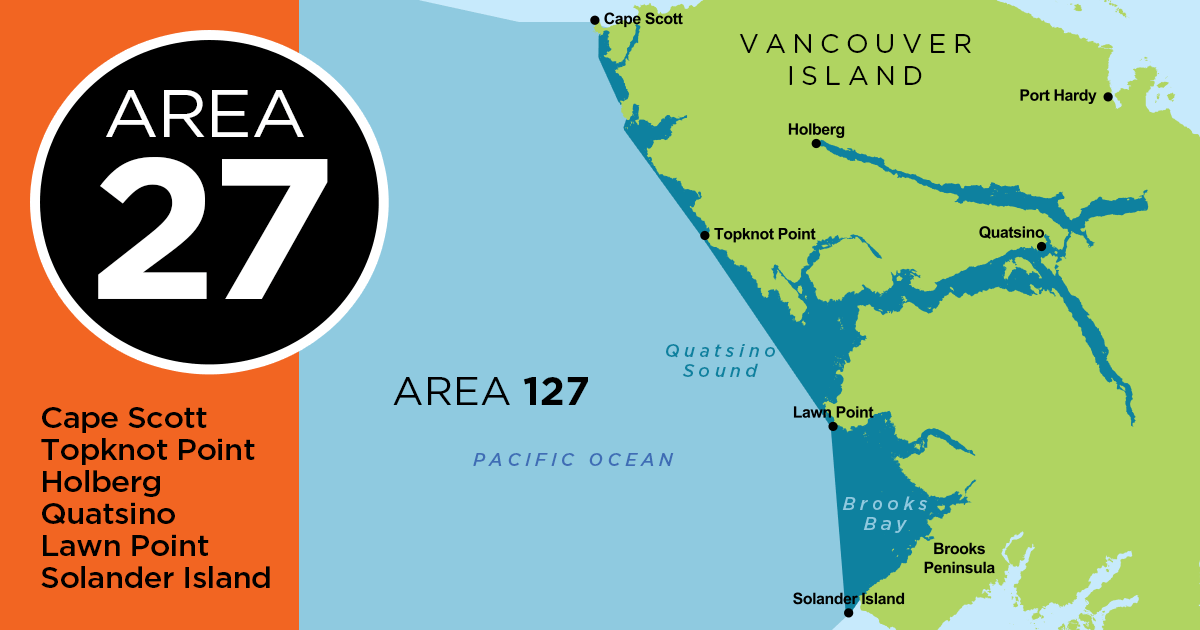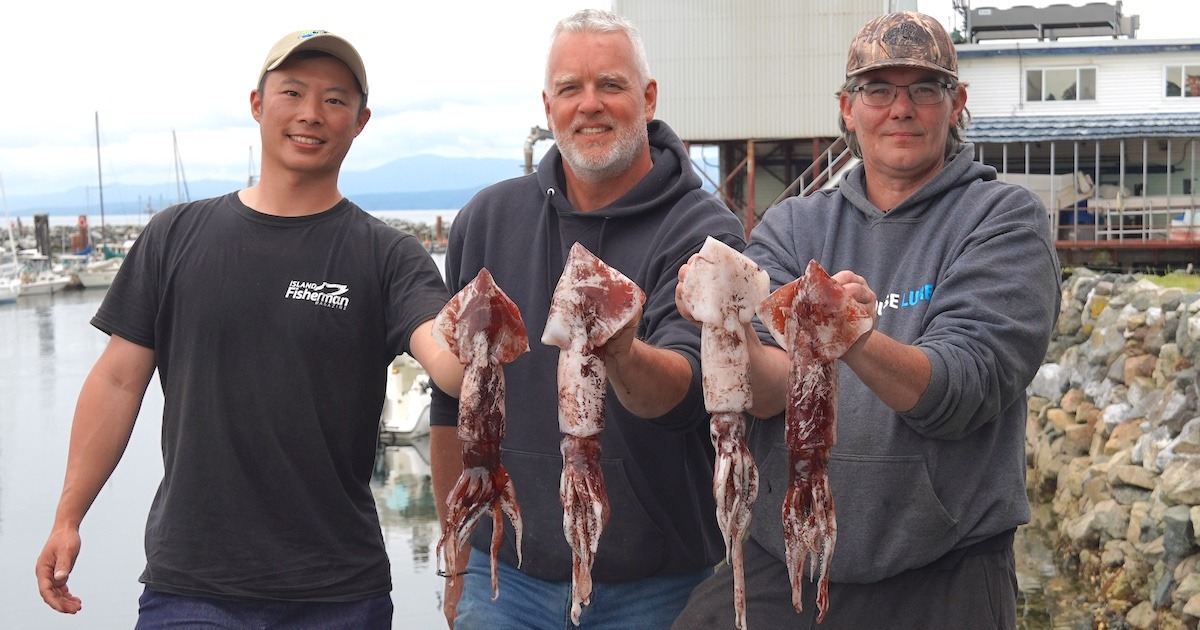
How about trying the squid fishery for a sustainable source of seafood and fun? Squid fishing around Vancouver Island is rapidly become popular; people on the west coast of Vancouver Island will jig for opal squid to use for calamari, or as bait for salmon and bottom fishing. There’s also Humboldt squid (aka red squid) around the island, but it is fished in deeper water, and it takes a lot more patience to find them. They are so sweet tasting when freshly cooked—or even eaten as sashimi right on your boat.
Opal squid has a fast growth rate, short lifecycle, and good number of eggs during spawning. Humboldt squid has a rapid growth rate, longer lifecycle, and produces a large number of eggs during spawning. I personally tried Humboldt squid fishing with Steve Burgess (the “Squid Man”), Glenn Sollitt, and Gary Cooper. Steve showed us a terrific new experience on the water. It was a blast learning about this fishery!
Check out this awesome video of the day squid fishing, courtesy of Gary Cooper who filmed during the outing..
Opal (Loligo) squid are what we typically think of when we think about squid fishing. They are usually found around kelp beds or near structure or a gravel bottom. However, they do swim as deep as 500 m. They swim in a school and they feed on fish, crustaceans, and even other squid. This means if you find them, mark the location on the plotter, and circle around the area. These squid grow up to 6″ to 12″ long before spawning, and they die after the spawn. Typically, you will find these squid along our coastline between December and September. March and July see the peak activity for the west coast of the island. It’s best to fish during the high tide on a cloudy or rainy day, or at night with a glow lure to attract them. Try night fishing for them with a glow squid lure on piers and docks. If you are fishing from a boat, look for inlets and bays with minimal current and some kelp or gravel structure.
Locating and fishing for Humboldt squid takes patience. You can fish for them all year round, but you must go deep—really deep, like where no sunlight will reach, as deep as 700 m. Humboldt squid generally migrate vertically during the day and night. They swim up to the surface during the night to feed and move deep when the sun is shining. Occasionally, they might be found feeding at the same depths as salmon or bait fish during the day. Some people trolling for salmon in Juan de Fuca Strait have reported hooking Humboldt squid. Steve Burgess “aka Squid Man” said, “It took me a long time trying to hook a squid. But once you get one in the boat, it becomes an itch for more. More squid!”
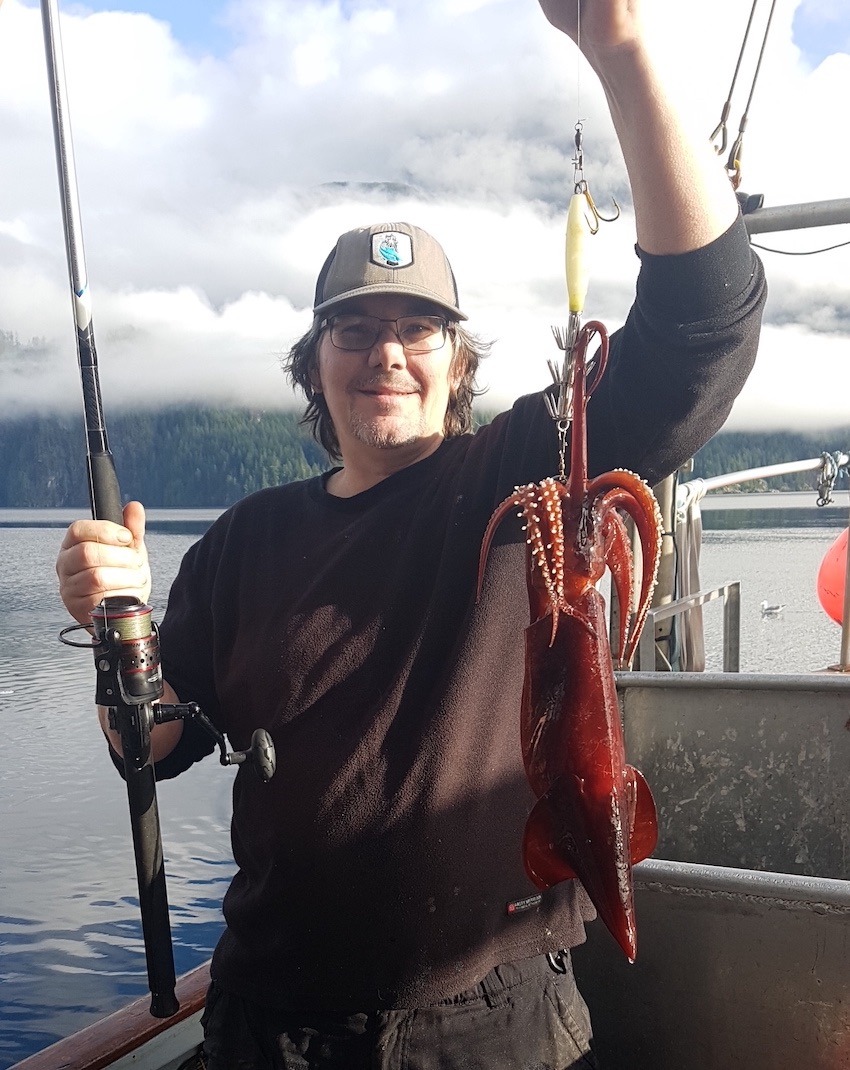
Steve Burgess Squid Fishing
Gear For Squid Fishing
For opal squid, you just need a 7′ to 9′ medium power/medium action rod, and a spincasting or baitcaster reel. Use 8- to 20-lb mono fishing line with small squid jigging lures. These squid jigging lures come in many shapes and sizes, but the go-to is the 4″ glow lure with umbrella hooks. Tie your fishing line to the glow lure and cast it out to the squid. If you are trying to fish deeper, or there’s slight current around, you might want to add a weight on the bottom of the lure to help it sink.
For Humboldt squid, you need an 8′ to 11′ heavy power/medium action rod, and a high-speed gear ratio reel with a large spool rated for over 1,000′ (330 yards). Spool the reel with thin diameter braid line to fish down deep. The most popular test is 20- to 50-lb braid line because it helps cut down water resistance and the thin braid provides sensitivity when fishing deep. For Humboldt squid, use a giant glow squid jig lure, or a baitfish-shaped glow jig lure weighted 14 oz or more. These squid lures will have 2 to 3 rows of umbrella hooks and the lure body can be as long as 12″ or more.
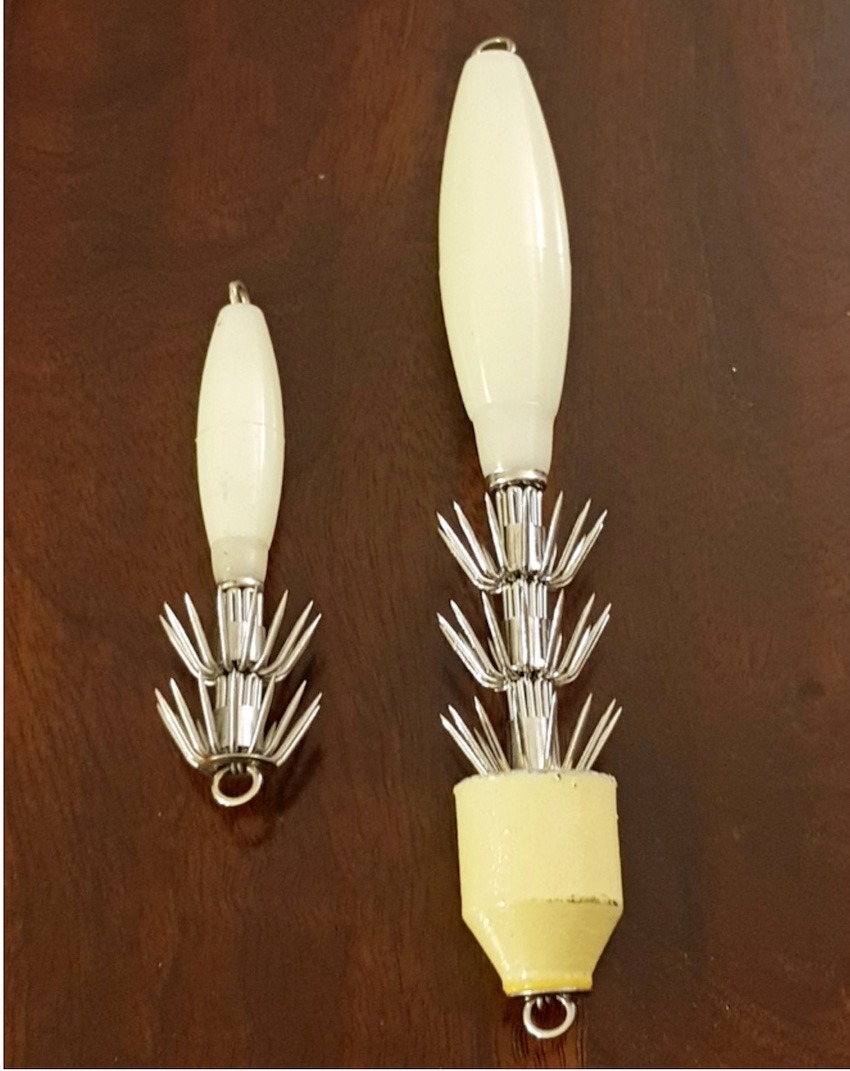
Glow Squid Jig
Squid Fishing Techniques
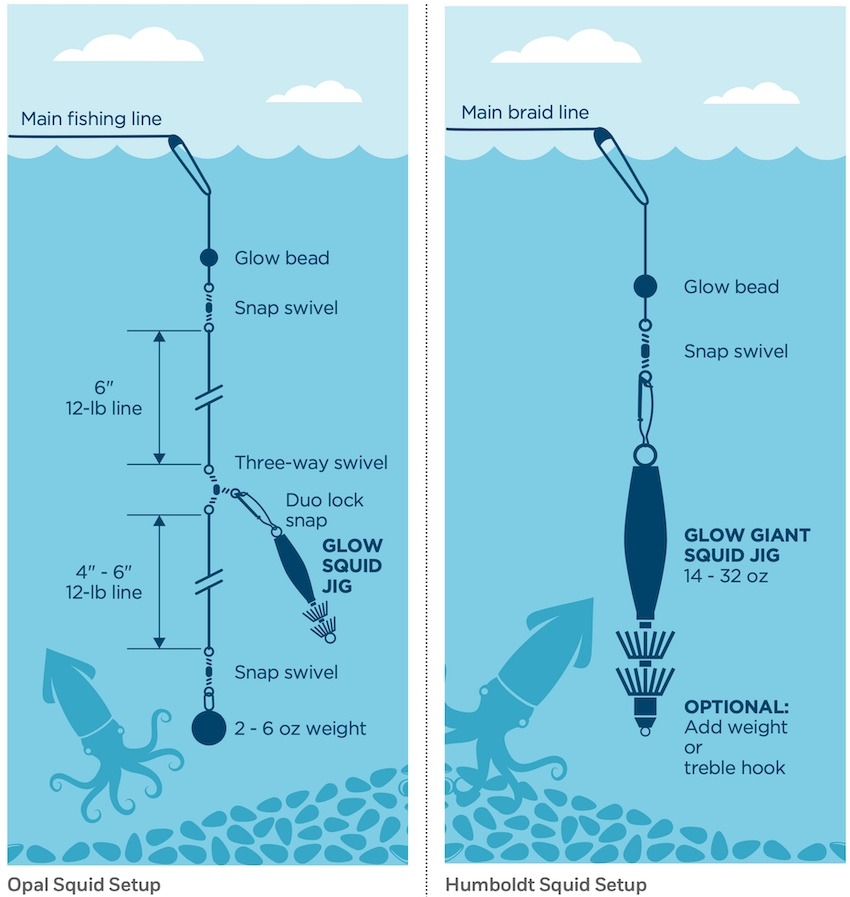
Try all kinds of different spots to find the squid. For opal squid, I suggest trying near docks, piers, the edge of a breakwater, edges of a kelp bed, and other structures. For Humboldt, Steve Burgess suggests to try fishing deep trenches where your sounder shows a scattered bait layer and a scattered fish layer. Do that during a new moon phase (dark sky or a day with little sunlight) for your best chance. That scattered bait layer in the deep water could be hake or krill. Jig below that layer for the Humboldt squid. Start jigging around 300′ and then try deeper. For both types of squid, it is best to fish at night with glow lures because squid are attracted to light.
Steve advises, “Squid are below the krill and hake in the water column.”
Also, fish in water with a slow current. Cast your lure and get it down to your desired depth. Give the lure a couple short jigs, then a long jig. Soon you’ll see what jig action the squid wants to attack. When you feel a light tug, set the hook by reeling fast. Don’t “pump reel” the squid in (like you would a halibut) because there are no barbs on the umbrella hooks—you will lose your squid. Just reel fast, and always keep the tension on. Any sudden stop in reeling might lose your squid. Use the drag on your reel to help maintain the tension while fighting the squid up.
Steve says, “Just reel and let the reel drag keep the rod bend and line tension.”
Once you get your squid to the surface, net it or pull it on to the pier/boat. Grab it by the head and unhook the squid without getting near the beak. Then put it in a bucket to take home. You can kill a squid humanly via ike-jime with a spike or a karate chop/bonk just above the eyes. When done correctly, the squid will turn white on the head. Keep your squid chilled to keep it fresh, of course.
Cleaning Squid For Human Consumption
Usually, people just keep the legs and the tube, but you can eat every part of the squid (except the hard beak) if you want to. The eyes, the glasslike bone, and the guts are typically thrown away or used as bait. Some people will keep the ink sac for squid ink pasta. If you like eating your squid white, peel the red thin skin layer off the squid meat.
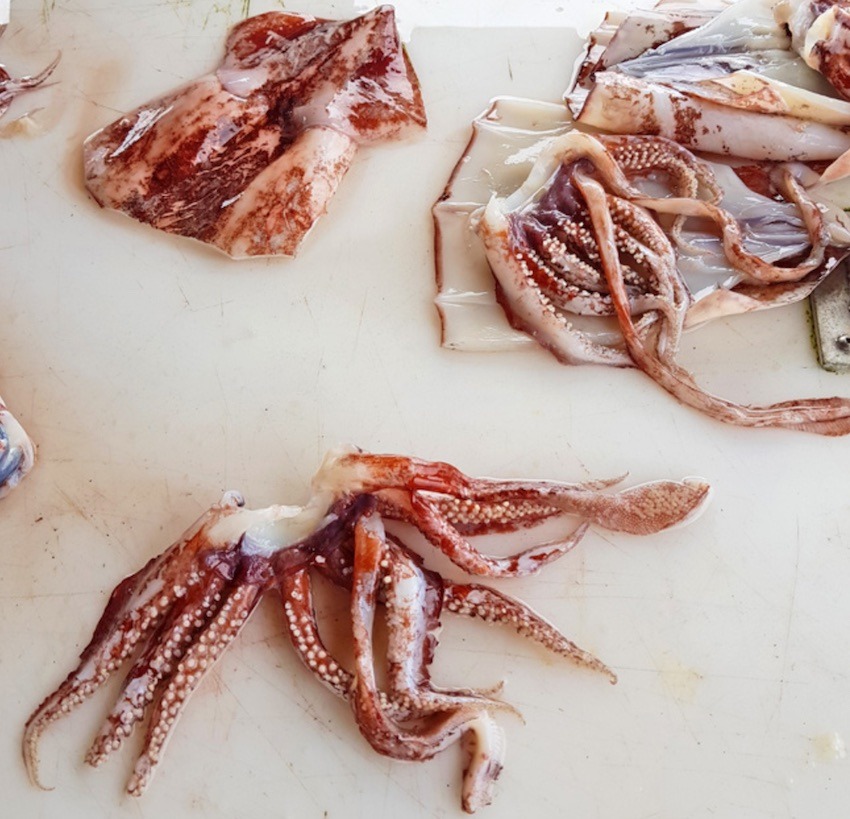
Cleaning Squid For Human Consumption
There are so many ways to cook squid. You can just cut them into bite size strips and boil them in water, then eat them with a dipping sauce. You can deep fry them in a batter or panko crust as calamari. You can BBQ the whole tube and legs with a sweet sauce. You can pan fry the squid and dip in a sauce. Fresh squid have a sweet ocean taste with a slightly chewy texture. It has as much protein as chicken by weight but has more nutrients.
Give squid fishing a try when salmon opportunities are not available in your area, or just to try something new. It will take time and patience to find them, but once you hook a squid, you will want to catch more—it’s an incredible experience. As for Steve Burgess, he tells me that he always wants to catch more squid than salmon.
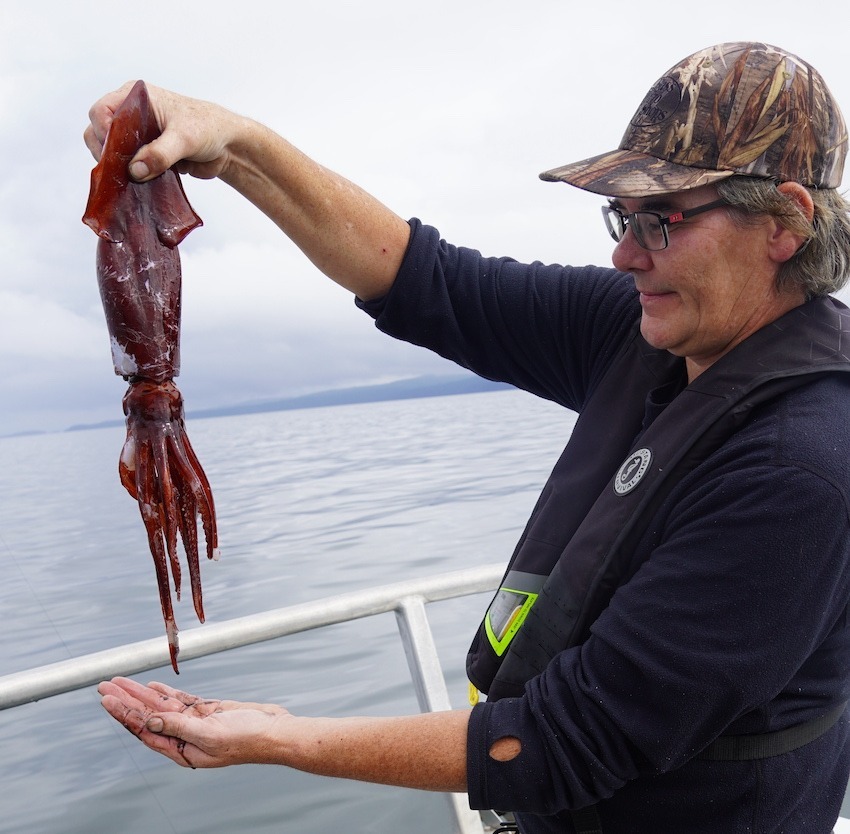
Steve Burgess Squid Fishing Photo Credit: Gary Cooper
This article appeared in Island Fisherman magazine. Never miss another issue—subscribe today!
Visit the Store
$34.99
$34.99
Featured Catch
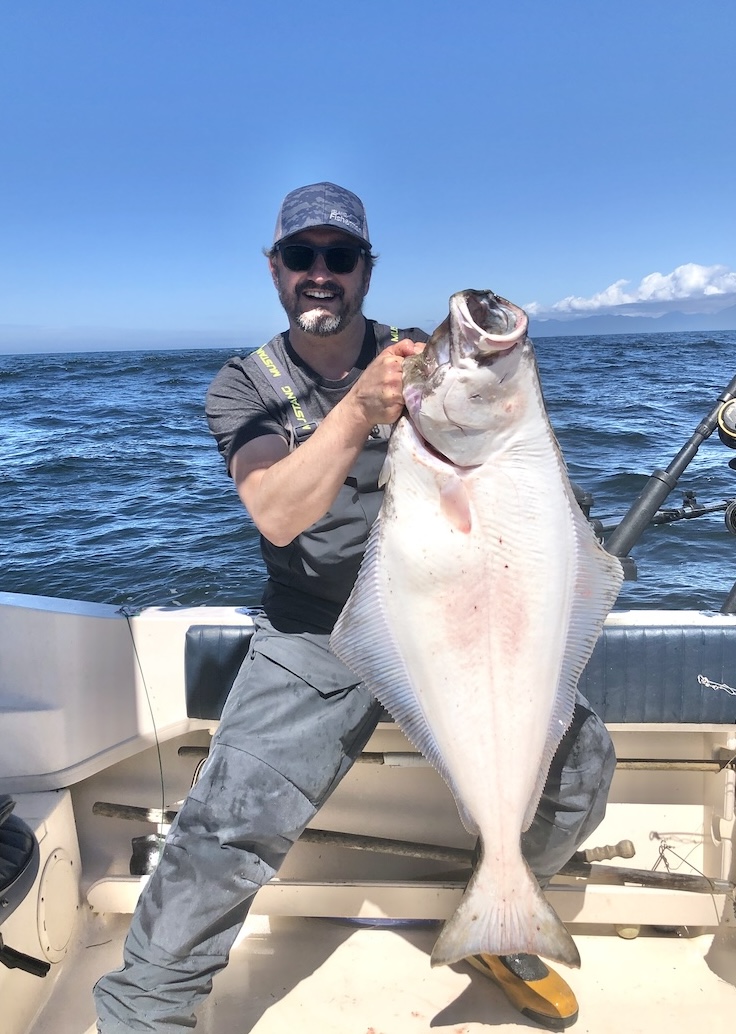
Joel Unickow halibut (Photo: Rob Frawley Lucky Strike Sportfishing Tofino)


